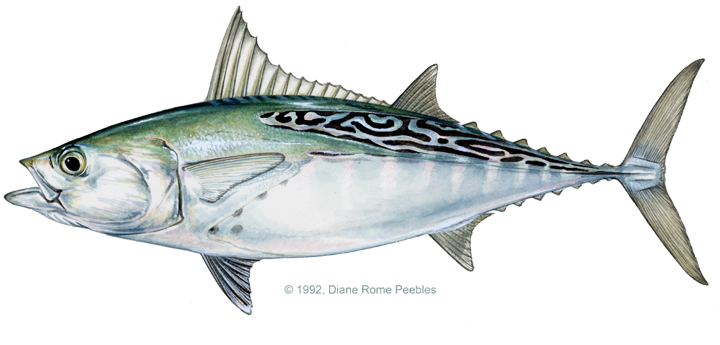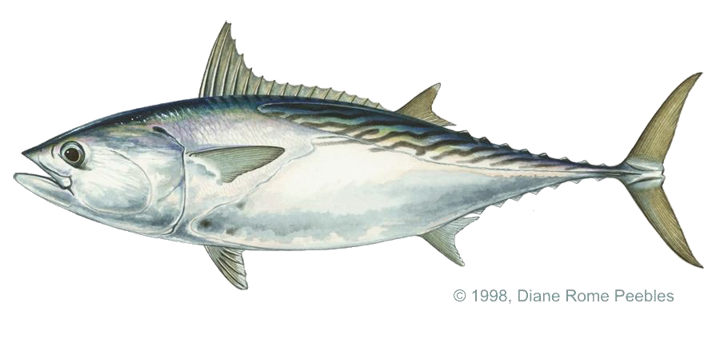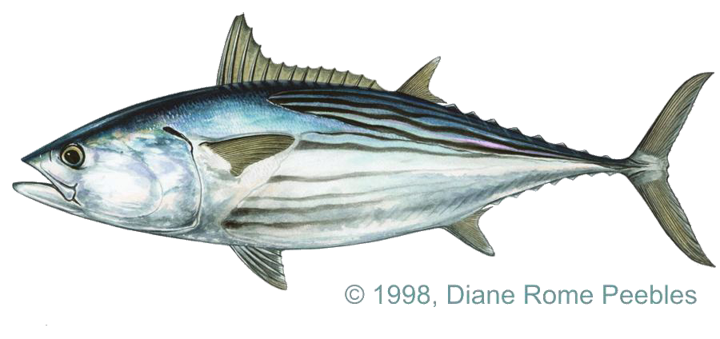Game Fish Identification Reference Guides
Tunny, little
(Euthynnus alletteratus)
(Euthynnus alletteratus)

(Rafinesque, 1810); SCOMBRIDAE FAMILY; also called little tuna, Atlantic little tunny, false albacore
Occurs in tropical and warm temperate waters of the Atlantic Ocean from the New England states and Bermuda to Brazil and from South Africa to Biscay or Great Britain. They are also in the Mediterranean. It is a pelagic, schooling, migratory species.
It is most easily distinguished from similar species by its markings. It has a scattering of dark spots resembling fingerprints between the pectoral and ventral fins that are not present on any related Atlantic species. It also has wavy, “worm like” markings on the back. These markings are above the lateral line within a well marked border, and never extend farther forward than about the middle of the first dorsal fin. The markings are the same as in the closely related Pacific kawakawa (Euthynnus affinis) but are unlike those of any other Atlantic species.
Flocks of diving seabirds are often indicative of the presence of a school of little tunny, which may consist of many thousands of individuals. Because this species feeds on small pelagic fishes near the surface, any school feeding action tends to attract and excite birds. Fishing methods include trolling or casting from boats using small whole baits, strip baits, or small lures such as spoons, plugs, jigs, and feathers. A few little tunny may be caught from shore. The dark flesh is esteemed by some and disdained by others
Occurs in tropical and warm temperate waters of the Atlantic Ocean from the New England states and Bermuda to Brazil and from South Africa to Biscay or Great Britain. They are also in the Mediterranean. It is a pelagic, schooling, migratory species.
It is most easily distinguished from similar species by its markings. It has a scattering of dark spots resembling fingerprints between the pectoral and ventral fins that are not present on any related Atlantic species. It also has wavy, “worm like” markings on the back. These markings are above the lateral line within a well marked border, and never extend farther forward than about the middle of the first dorsal fin. The markings are the same as in the closely related Pacific kawakawa (Euthynnus affinis) but are unlike those of any other Atlantic species.
Flocks of diving seabirds are often indicative of the presence of a school of little tunny, which may consist of many thousands of individuals. Because this species feeds on small pelagic fishes near the surface, any school feeding action tends to attract and excite birds. Fishing methods include trolling or casting from boats using small whole baits, strip baits, or small lures such as spoons, plugs, jigs, and feathers. A few little tunny may be caught from shore. The dark flesh is esteemed by some and disdained by others














